By Jason Harris



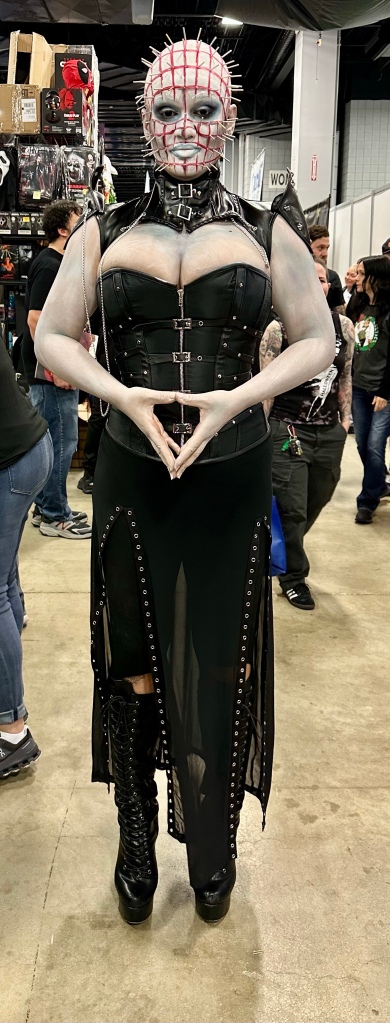
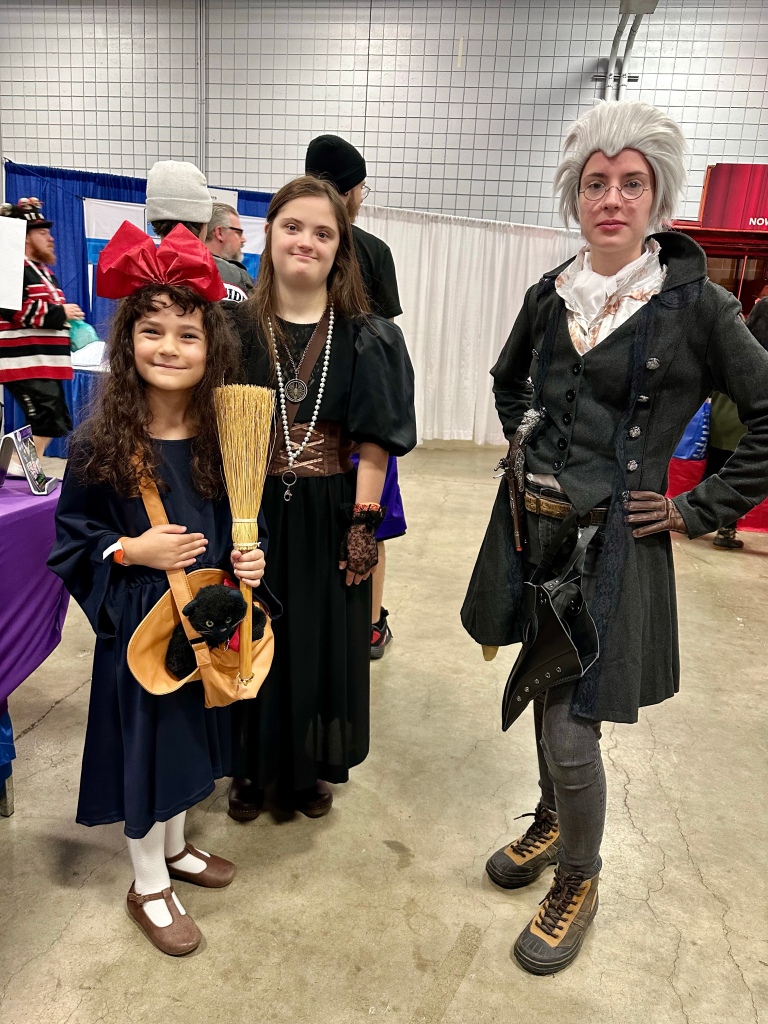

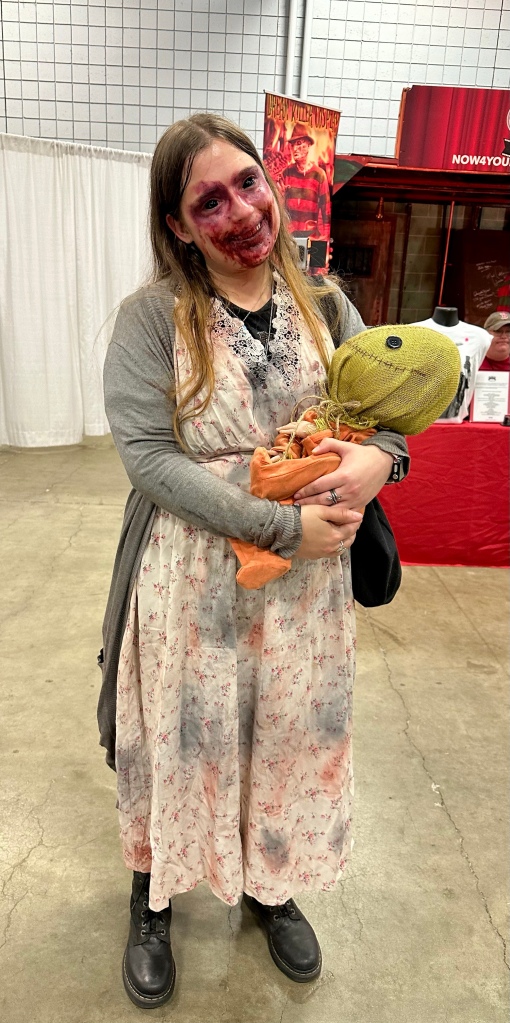


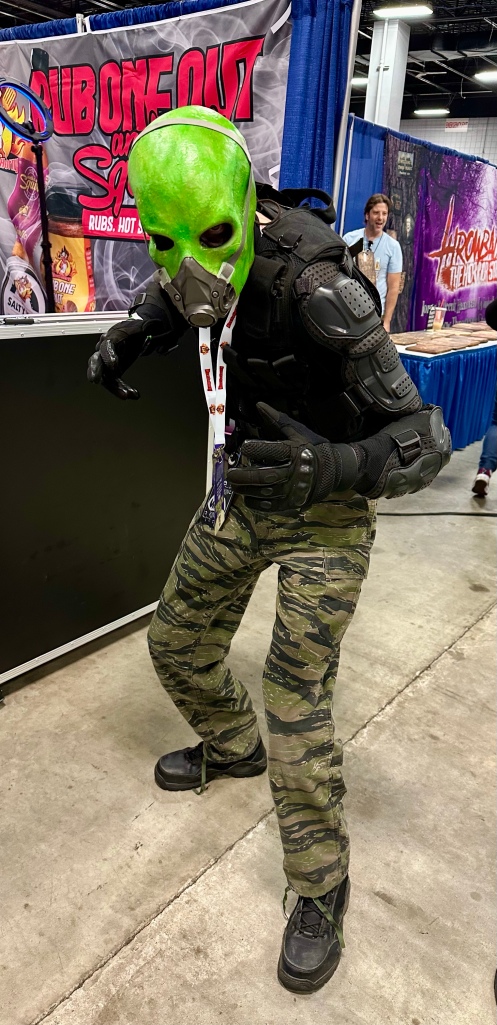
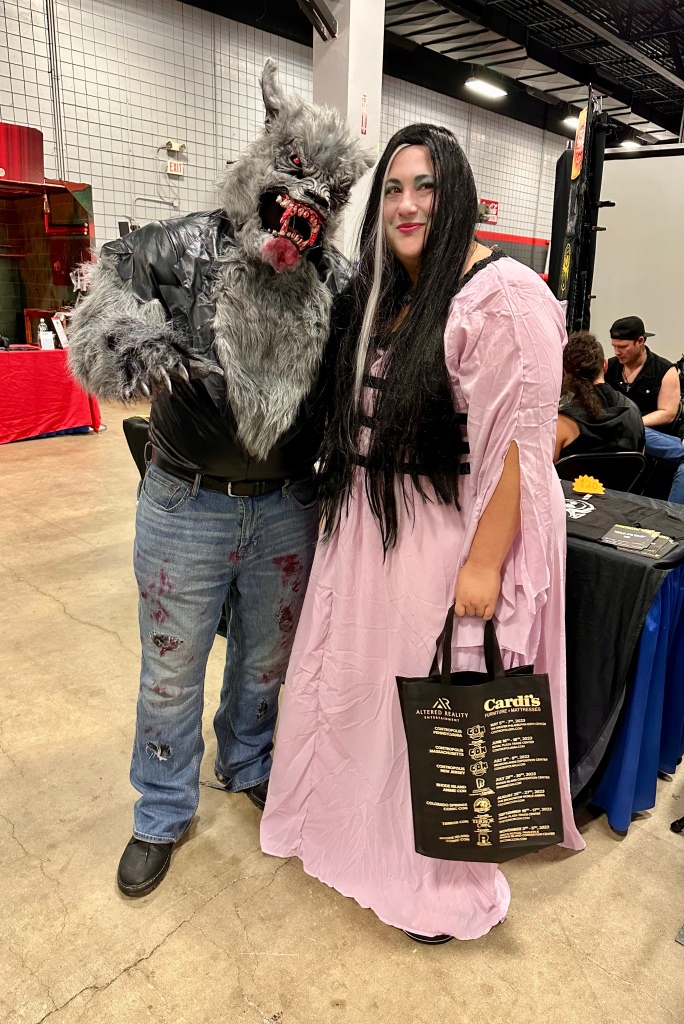













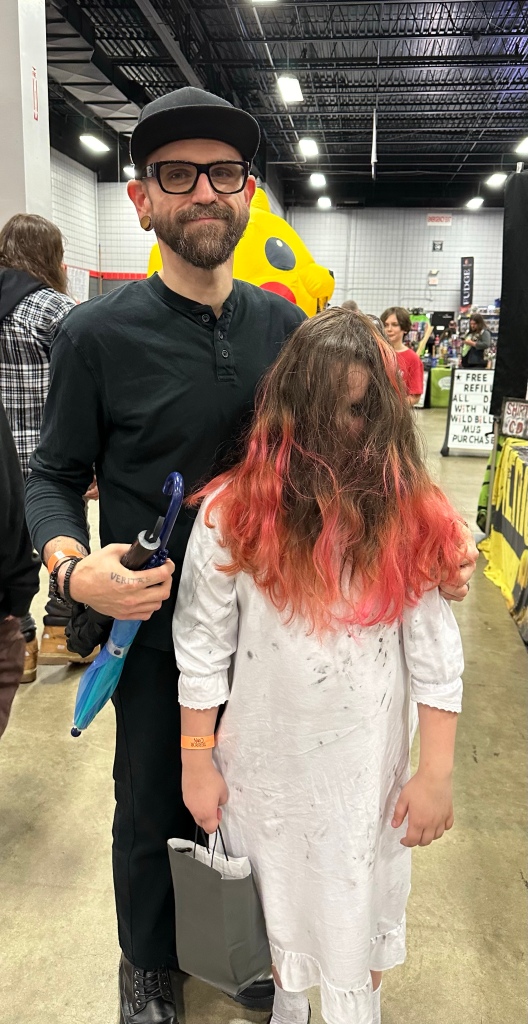
By Jason Harris

























By Jason Harris


Emily Kinney (The Walking Dead).



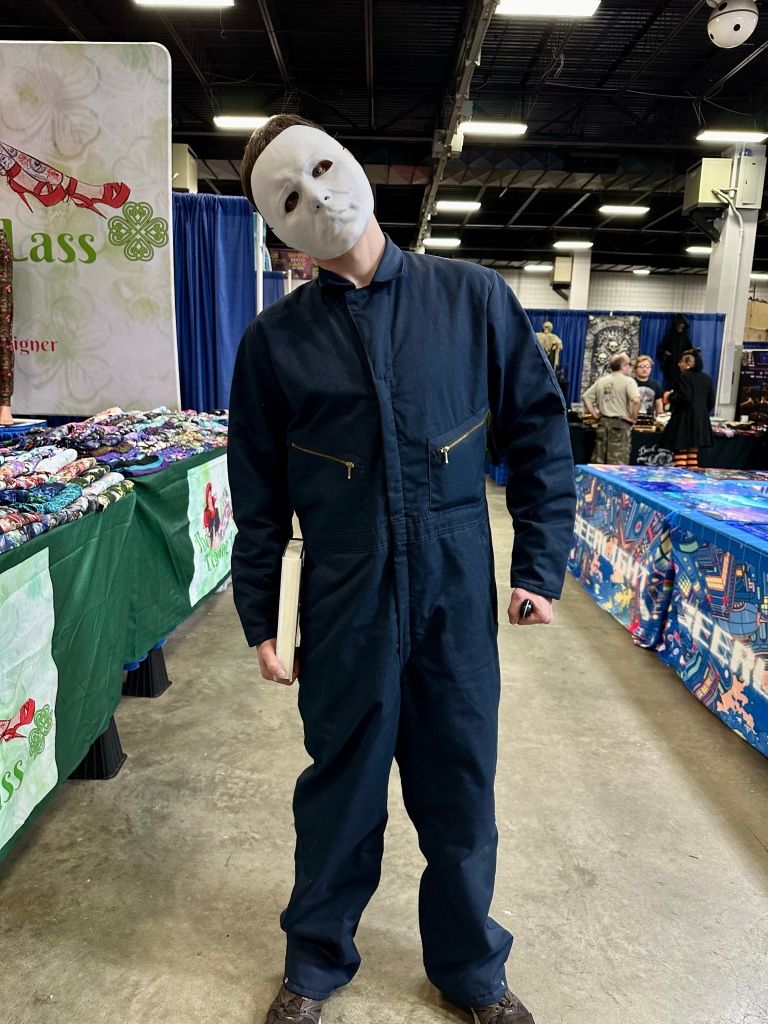
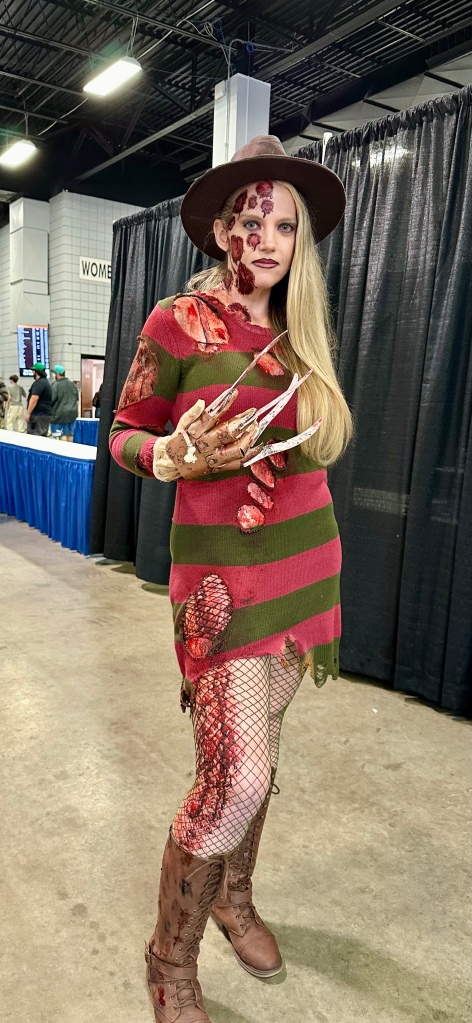


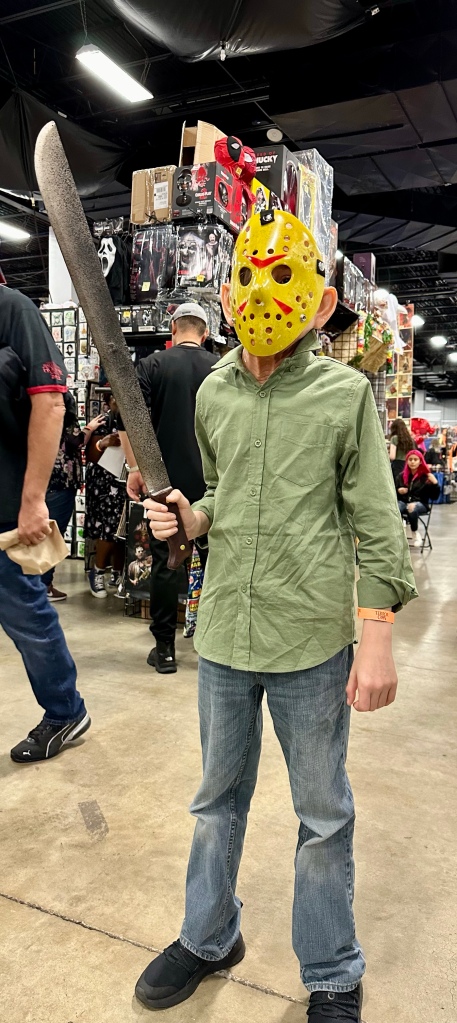

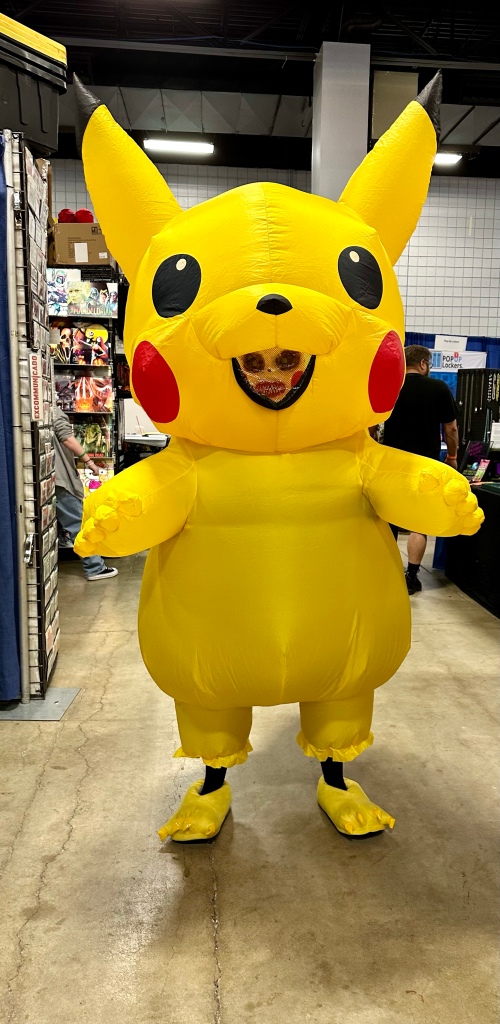



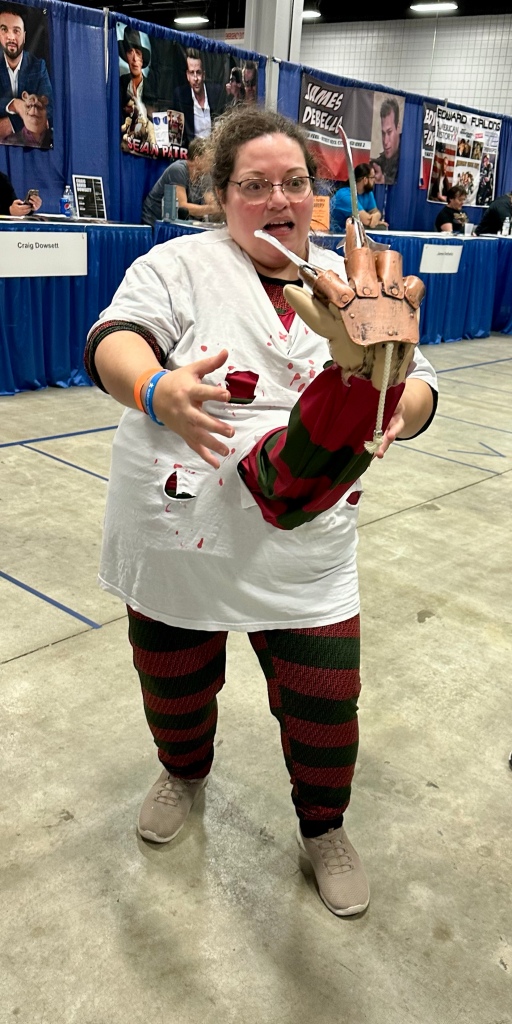


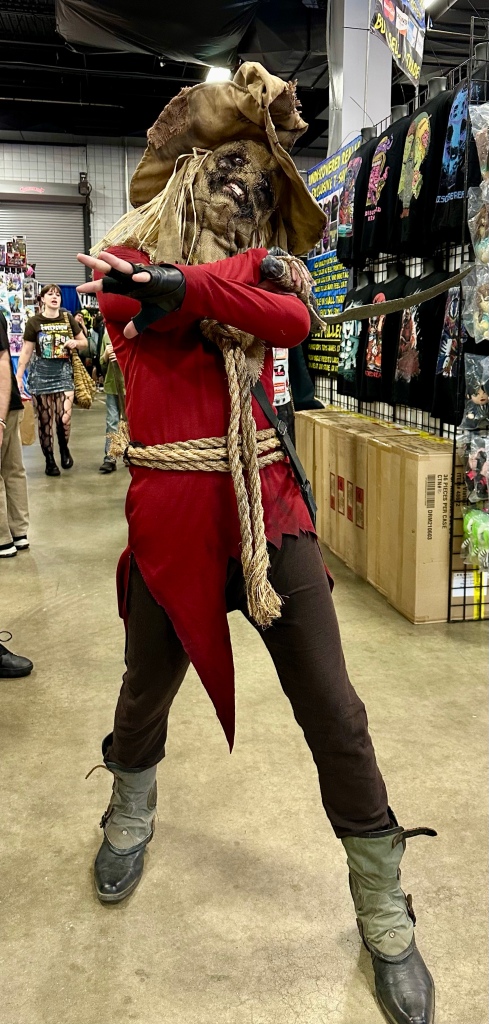






By Jason Harris











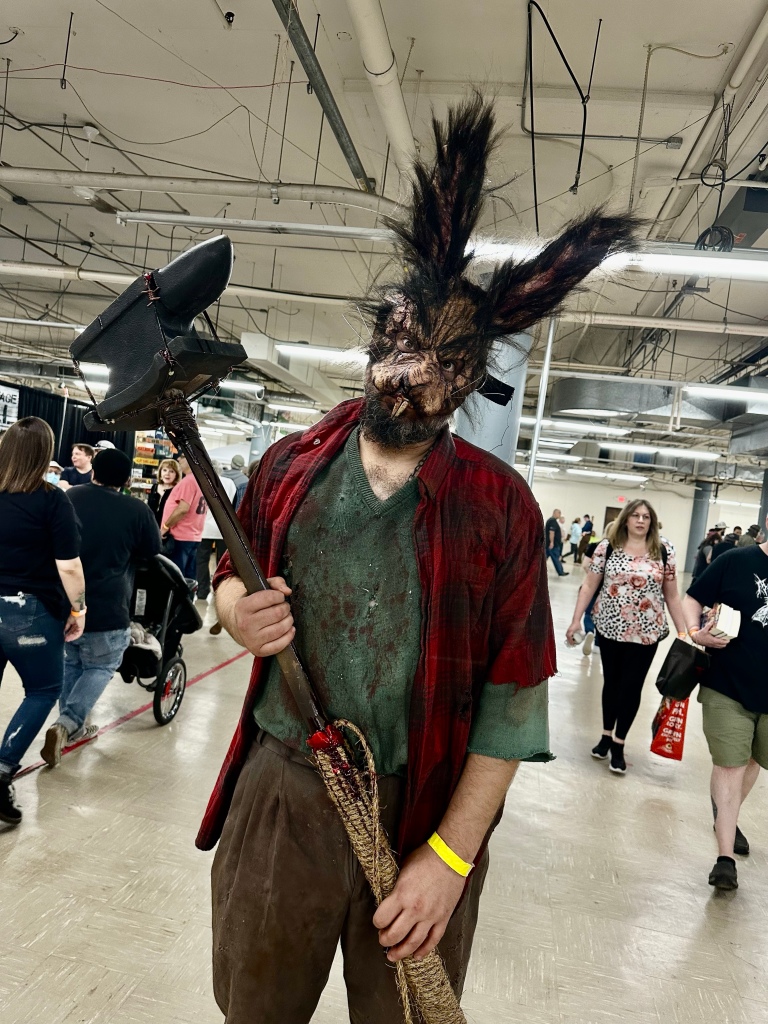






Author David Price at the 2013 New England Author Expo. Photo by Jason Harris.
David Price is the author of Dead in the USA. He resides in Massachusetts. His new story, “Necrophone,” appeared in the online sci-fi & fantasy magazine, Buzzy Mag, today.
JH: How did your adventure in writing come about?
DP: Well, I’ve always loved reading. I was a huge comic book fan, and later moved on to Stephen King, J.R.R. Tolkien, Brian Lumley and many other speculative fiction writers. In my freshman year of college, I absolutely aced Composition 1. I was undeclared, and my professor suggested I become an English Major. That’s really when I first started thinking seriously about becoming a writer.
JH: What was your first published work?
DP: I had a short story based on the haunted experiences in my life published in a collection called Tales from the Grave.
JH: Do you have a specific writing style?
DP: The most frequent comment or compliment to my writing is that it’s “page-turning.” I’ve also been told that I do particularly well with dialogue. I don’t tend to bog down on details or describe a scene for very long. If you like extensive, detailed descriptions, I’m probably not for you. If you like stuff that moves along, I might be your guy.
JH: What year were you published?
DP: 2012 was the first time I saw myself in print, other than an online article or two.
JH: Have any real life instances influenced your work?
DP: Oh sure, I’ve put many of my real life experiences in my work. In my story “Necrophone,” coming out in Buzzy Mag in March, I mention cliff jumping at a quarry. That really happened. Actually quite a bit of that story is based on my relationship with my grandfather, as I wrote it shortly after he died.
JH: What books have influenced your life the most?
DP: Hmm, my life or my writing? The Stand is my favorite book, so it’s certainly influenced me. The works of Stephen King have changed the way I see the world, at times. Some of the ideas in the Dark Tower series will always influence me, I think. And then of course, there’s J.R.R. Tolkien. The fact that The Hobbit and The Lord of the Rings are the main influence for the Dungeons & Dragons game is important. D & D is the inspiration for the series of epic fantasy books I am currently writing.
JH: Who is your favorite author and what is it that really strikes you about their work?
DP: Stephen King, hands down. Even when his stories don’t quite hit the mark, he has the way of always getting me to care about his characters. I don’t think I write much like Stephen King myself, but I am always conscious of trying to get the reader to care about my characters.
JH: Are there any new authors that have grasped your interest?
DP: Well, J.K. Rowling isn’t that new, but I consider the Harry Potter series pretty much revolutionary. I’m a big fan of John McIlveen, having recently read his collection, Jerks. Bracken MacLeod is an up and coming writer, as anyone who is paying attention to the horror and crime markets will tell you. Kealan Patrick Burke writes so beautifully, that I doubt I’ll ever equal his style.
JH: Can you share a little of your current work with us?
DP: As I said, “Necrophone” is a short story that will be published online in Buzzy Mag on March 27. It’s about a man who discovers a phone app that allows him to communicate with the dead, in this case, his recently deceased grandfather. Other than that, I’m putting some more polish on the first book of my epic Lovecraftian fantasy series: Lightbringer.
JH: What was the last book or piece of work that you had published? What was it about?
DP: Last year I had my essay “Shark Bait” published in the collection, Phobias, from Hidden Thoughts Press.
JH: Do you have a ritual before you write?
DP: Not really. I’ve used music at times, usually Tool or Puscifer. Sometimes I drink coffee, sometimes wine.
JH: Do you have any advice for other writers?
DP: If you don’t have the stomach for rejection, this might not be the business or hobby for you. I wasn’t ready for all the rejection, to be honest. I mean, I knew it was part of the business, but I didn’t realize how hard it would be to handle at times. That story, “Necrophone” that I’ve mentioned already? That was rejected more than ten times. I finally sold it to Buzzy Mag, making it the best paying story I’ve sold to date. You just never know. Stick with it and try not to take it personally. Just keep writing, keep improving, and keep submitting.
JH: Are you going to be signing anywhere in the near future?
DP: I will be at Super MegaFest in Marlborough, MA, April 17-19, Anthocon in Portsmouth, NH, June 5-7, Necon in Portsmouth, RI, July 16-19, Granite State ComicCon in Manchester, NH September 12-13, and possibly Necronomicon in Providence, RI, August 20-23. That’s all for now!
You can follow David on Twitter here and find out about David on his website here and on his Amazon page here.
F.M. Kearney, an award-winning photographer, has written his first horror novel, They Only Come out at Night. Today, he’s talking about his career, New York Subways, and writing his first horror novel.
JH: How long have you been a fine art nature photographer?
FK: I’ve been a fine art nature photographer for about 20 years.
JH: What awards have you won for your photography?
FK: I’ve won numerous awards from various magazine and online photography competitions, ranging from First Place to Honorable Mentions.
JH: In the 80’s, you worked as a photojournalist for various New York City newspapers. What newspapers did you work for? What were you covering for them?
FK: I’ve worked for a number of local papers such as Town & Village, City Limits, The Phoenix, The City Sun and The New York Tribune. I mainly covered news pertaining to the particular neighborhood or borough that the paper serviced, but I also did hard news as well. I’ve done ride-alongs with FDNY and NYPD undercover units. I covered the first bombing of the World Trade Center in 1993. I’ve also photographed many famous people, such as Bill Cosby, Mayor David Dinkins, Fred Lebow (founder of the NYC Marathon) and several sports celebrities in one-on-one sit-down interviews.
FK: I suppose my inspiration was two-fold. The first, and most obvious inspiration, came from my own personal experiences in the subway. As a photojournalist, I rode the subway all over town traveling to and from my assignments. I lived (and still do) in Manhattan, and up to that point, I had never really been to a lot of the stations in the outer boroughs, i.e., The Bronx, Brooklyn and Queens. I was really amazed at the total contrast in environments. You see, when most out-of-towners think of the NYC subway, images of Times Square and Grand Central Station will undoubtedly come to mind. These are huge, bustling hubs filled noisy activity and throngs of commuters almost 24/7. They have come to define what the NYC subway is all about. However, stations like these only account for a tiny percentage of the 463 stations of which the entire system is comprised. The vast majority of stations are nothing like that. In fact, I would even say that they are the polar opposites. Many of the stations in the outer boroughs (and even some in Manhattan) are very quiet, dimly lit and sparsely populated…and that’s in the middle of the day! I can remember being in certain areas of some stations that were sore mote and so creepy that I felt very uncomfortable and couldn’t wait to get out. Many of these areas have since been sealed off to the public…presumably because of the safety risks they posed. I couldn’t help but think that this would be a perfect location for a horror story. To be honest, I’m actually surprised that Hollywood doesn’t use the NYC subway as a regular setting for horror movies.
FK: I’ve always been a fan of everything horror related…books, movies, TV shows, you name it. But, I always found one flaw in almost every story. It seemed as though a lot of time and effort went into producing the chills and thrills throughout the story, but the ending was usually somewhat of a letdown. Of course, most horror stories are fiction, but it seemed as though no attempt at all was made to make the story even halfway believable. I wanted to write a story that made sense — a story that, albeit fictional, contained enough factual details one might wonder if it could actually happen.
JH: Why did you use the New York City subway as the main setting?
FK: Aside from the reasons already mentioned, I used the subway because of its familiarity to so many people — even if they don’t happen to live in a major city that has a subway. Most tourists will make riding the subway one of their “must-dos” while visiting. Very few people will ever find themselves in an actual haunted house or a foggy cemetery at midnight. The same can’t be said for a subway. I think the chills are far more intense when you read about scary things happening in a more familiar and commonplace environment. After having read the book, a lot of people have told me that they will never again ride the subway alone at night.
JH: What type of research did you do for the book?
FK: I visited every major location I wrote about with a digital tape recorder. I recorded everything I saw, heard, smelled and felt…things that I (and probably most people) would never even give a second thought. This greatly helped to create atmosphere. I also researched news articles about local crimes committed in the area, and spoke with the NYPD about specific rescue procedures in the subway. As far as the supernatural aspects of the book are concerned, I went online and researched actual case studies and terminology. Lastly, the dates in the book are very important. I went to the library to insure that the days of the week and the newspaper articles I mentioned were correct.
JH: How long did it take you to write the book?
FK: Since I had no deadlines and was basically just writing for fun, I’d say it took about 10 years from start to finish.
JH: What’s been the reaction of some of the people who have read the book?
FK: Chapter One, by far, has received the biggest reaction! Many of my friends have told me that it was the most intense thing that they’ve ever read. Although they thoroughly enjoyed it, I realized that it might be a little too intense for the average reader. Before releasing the book to the public, I considerably watered-down this chapter from its original version. Even so, a number of reviewers have commented on just how violent this chapter is, and a few were even unable to get past it. Make no mistake, Chapter One is not for the faint of heart, but it is necessary to the story as a whole.
JH: Are there any other genres, you want to write in?
FK: As a nature photographer, I’ve considered putting out a non-fiction book about nature photography at some point in the future.
JH: Who is your favorite author/authors and what is it that really strikes you about their work?
FK: I like many of the works from Dean Koontz and Stephen King. I think King’s books are much better than his movies — many of which leave me scratching my head. These writers have a way of painting a picture with words that tends to put the reader right in the scene. I tried to do that with my book as well.
JH: What books have most influenced your life the most?
FK: I don’t know if I can point to any one book of fiction. However, I’ve read many photography books that greatly influence the way I shoot.
JH: Are you working on a second novel?
FK: Not at this time. Many have suggested a sequel to They Only Come Out at Night. Although it definitely lends itself to a sequel, I can’t see myself writing one. Unless you’re talking about an action series, most sequels rarely live up to the original.
JH: What are your current projects?
FK: I’m currently focusing more on my photography and photography articles.
JH: Your adventure in writing started in 2001. How did that come about?
CB: I had just started secondary school at age 11, and had always enjoyed reading in my spare time. In English classes, my passion for writing began to flourish, partially because of support from teachers, as well as at home, so it became something I enjoyed and felt confident in pursuing.
JH: The Cathy Stories came about from your time in school. Can you tell my readers how that came about, what’s it about and how long this work is?
CB: This book still makes me smile now, mostly because I get very nostalgic when talking about it. It was a fun piece to write, probably only 50 or so pages long, and was all about “Cathy” the main character, and her friends, who battled evil demons while having to crack puzzles and codes. It was all based in at school, too, so the mentors in the book were all based on teachers. It was a comedy, and it was my first attempt at writing for a particular audience.
JH: How did the opening of your first book, Whistler’s Travels, come about being published by Manchester Metropolitan University and why only the opening?
CB: This was a piece I submitted as part of a writing competition, and so I got it published that way. At that point I had only written the opening, so it was a good opportunity to test the water, and see if it was something worth following up [on].
JH: What inspired you to write your first book and what was the idea behind it?
CB: My first serious completed work was Eden from the Ashes. With it being my first piece, looking back I feel it is quite disjointed, so I will definitely be undertaking a huge re-edit before it comes into the public domain. It was a really interesting project for me, as it allowed me to experiment and really understand the freedom of writing. I finished that book when I was around 18, so it will be good for me to have a look back, and try and develop some of the ideas behind it.
I was inspired to write it as I had suffered hugely from bullying, and as, at the time, I was a very shy, reserved person, I had no real outlet to express how I was feeling. This is where writing became a huge emotional support for me, and continues to help me alleviate stress as well as being a very enjoyable pastime.
JH: The title for Whistler’s Travels was changed to Eden from the Ashes? What is it about and what was the reason behind the name change?
CB: The book itself is a fantasy fiction, focused on a socially isolated character, who decides to leave the village he has lived in all his life, and break away into the unknown. The story is about him developing as a person, learning more about his interests and limits, and understanding how his interests and habits had been formed by his environment, not be his personal choice.
The title Whistlers Travels was never a serious title for me. It came about because I needed a name to reference my work, and that was a simple one. It kind of stuck, however, but once it was finished, I wasnt happy with that as a final title. It didn’t fit well with the storyline as it had developed, and didn’t really give an insight as to the meaningfulness of the book to me. Eden from the Ashes is much more fitting.
JH: Your second work Nomed was also re-named. It changed to Apocalypse 2012, then to Man Down, then to The Children of Manson. What’s this work about and is there a story behind all the different title changes?
CB: The Children of Manson is a horror [story], which ties together terror, gore, and psychosis, with a subtle political undertone. It was a way of expressing some of my views about some real life issues as an undertone, while the predominant storyline was horror. It centres around Dee, a student who seeks comfort from her isolation at University from her flatmate Lily, and their friendship quickly blossoms into something more.
Unbeknownst to Dee, a sinister figure is watching her closely. He grows exceedingly paranoid as he tracks her movements over time, as he fears she knows about his own dark secrets. Underneath the home in which he is cared for, a maze of passageways are home to a cult following, vigilant in their tasks under Lloyd’s watchful eye.
Their aim? To prevent pregnancy, destroy fertility, and if necessary, will go to the very extreme to achieve their goals.
The reason for the many name changes was that the book underwent a huge re-edit, where the plot line massively changed. For this reason the first title was no longer relevant. I re-named it Man Down to continue the story, but again, wasn’t entirely happy with this new title either. It was when I decided on the cult following as a major part of the storyline that I became set on The Children of Manson. There are also other subtleties in the storyline , for example the “Family” reference, that helped me decide that this was a most fitting title.
JH: You published The Sick & Sombre Tales of Sinister Town-Part 1 this past October. This was another work of yours to sustain a name change. Why the name change and why break it up into different parts? And how many parts will there be?
CB: The name change was to allow myself some flexibility as to the content. My focus for Part 1 was to give some background as to the characters and the general environment of Sinister Town. Initially there were 7 short stories, but I felt some were better placed in Part 2, so I needed to change the title to reflect that.
At the moment, I plan there to be 3 parts. Part 2 is well on its way to completion, and I’m already building some ideas for Part 3. Whether there will be further parts after that … we will just have to wait and see.
JH: What are the different styles and what’s the impetus behind this series?
CB: I’m planning for the three parts to have three different focuses, i.e. the first one was about building up the actual characters who live in Sinister Town, so the next part will [focus] instead on an invader to the town, and the defense mechanisms the town uses to keep intruders out.
JH: Do you have a specific writing style?
CB: I think my writing style is quite distinguished, in that it is probably recognizable, but in saying that, I try to experiment with different styles depending on what I’m writing, and the type of atmosphere I’m trying to create.
JH: What genres do you write in?
CB: I write predominantly horror, though I am thinking of expanding in to fantasy/comedy, as I have bits and bobs still in the planning stages.
JH: Who is your favorite author/authors and what is it that really strikes you about their work?
CB: My favorite author is Stephen King; my favorite work by him was a joint piece with Peter Straub, called Black House. It is to this day the best book I have ever read in terms of fear. I remember vividly being too scared to turn the page, and even flipping forward a couple of pages first to steel myself into going back to read it.
That is what inspired me to write horror myself. I want to instill that feeling in others; I feel that the images the imagination conjures are so much more powerful than those fed to us by films.
JH: What books have most influenced your life the most?
CB: R.L. Stine deserves a lot of the credit for introducing me to the horror genre as a child (though I enjoyed all sorts of non-horror titles as well), as I would devour his books every evening after school.
Through my teenage years I did read some of R. L. Stine’s more mature works, but quickly became enthralled by Stephen King, and have never looked back. In fact, I have two of his books by my bedside as I type this!
JH: What are your current projects?
CB: I am currently working on a new horror [story], called The Black Sheep. I am looking to create a piece that explores the deep emotional effects of bullying, and the characters in this book play out a physical expression of those effects.
JH: Where can readers find your work and find out more about you?
Please have a look at my website to find out more. You can also find me on Twitter: @TheCathyStories. On Facebook. I am also on Google Plus or on Amazon.

Joe Hill’s third novel, NOS4A2, is a witty, terrifying ride into the creepy world of Charlie Manx, who creates a Christmasland of horrors and carts off young children in his Rolls Royce Wraith to join in the fun. If your idea of fun is akin to hunting humans, that is.
Vic McQueen is our heroine. We meet her as a young girl, when she discovers that while riding her bike, she can escape from her unhappy home into other places and worlds. She is, in fact, the only child to escape Christmasland, a fact that does not sit well with Manx and his assistant, Bing.
Vic escapes Manx’s clutches with the assistance of Lou Carmody, an overweight, socially awkward comic book aficionado, and the two soon find themselves together and raising their son, Bruce Wayne. Nope. Not kidding. They named the kid after Batman. It is this kid that Manx and Bing target, and this kid that Vic and Lou must work together to save.
Names seem to be pretty important to Joe Hill, and also serve to showcase his fabulous sense of humor. Charlie Manx is reminiscent of another Charlie M, one with a big, murderous family from the late 60s. Bing is the name of both a search engine (fitting, since he searches out kids that, in his mind, are better off in Christmasland than with their horrible parents) and of a famous holiday crooner. I like to think of the NOS4A2 Bing like the latter: as Crosby’s son would spill in a nasty tell-all book, Bing was not the nice guy he appeared to be; nor is this one. Vic McQueen is a tough, sexy, rebellious motorcycle enthusiast, and her childhood parallels that of late actor Steve McQueen. He too had fond memories of a childhood bike, ran away from home, and had daddy issues.
The understated hero of this novel is Lou Carmody, who was by far my favorite character. His love for Vic and his son are unquestioning, and quite frankly, you’ll like Vic a little less because of the way she treats him. Though it is Vic who must return to Christmasland to face her demons, she wouldn’t get there, get it done, and get out without Lou’s unwavering support and assistance.
The problem I’ve had in the past with Joe Hill’s work is his endings. I wasn’t crazy about how Horns wrapped up, and I positively hated the ending of Heart-Shaped Box. (I have heard the same complaint from others about Hill’s father. Personally, I feel you do not have the right to complain about Stephen King until after you have written a bazillion bestsellers yourself. Until then, shut up.) And here’s where NOS4A2 differs: I loved, yes loved, this ending. Yet again Hill lets his delightful funny bone shine through, and he did it in a wonderful way. Here’s a hint: if you didn’t read the Acknowledgements and A Note on the Type following the last chapter of this book, then you did not read NOS4A2 all the way through.
Overall, I found this to be well done, a little wordy at times, but worth the ride.
Rod Labbe has been a freelance writer since 1977. His work has appeared in such publications as Fangoria, Gorezone, Starlog, Famous Monsters of Filmland, Muscle & Fitness, and Autograph Collector magazine. He has written his first novel, The Blue Classroom, which is a ghost story and will be published by Samhain Publishing this coming May. He is currently working on his second novel, which will be published by Samhain in 2015.
JH: When you started freelancing in 1984, what publications did you write for?
RL: My writing/freelance career actually began in the fall of 1977, not 1984. That’s when I landed a work-study job as a reporter with The University Free Press weekly newspaper (University of Southern Maine). I was a sophomore, totally green, and had never written anything outside of short stories that were strictly for my own enjoyment. What I lacked in cred, however, I more than made up for with dedication, discipline and determination (the “three Ds,” as I call them). From 1977 to 1981, I contributed articles every week to the UFP, ranging from theatre reviews to editorials to sports pieces and pretty much everything in-between. No limits! I also found time to edit the campus literary magazine, The Presumpscot Review, published annually. All of that was great, a wonderful hands-on training ground–even more significant, since I’ve never taken a Journalism course, not one.
I continued this kind of writing (including editing The Maine Review, a literary magazine at the University of Maine) as a graduate student at the University of Maine in Orono. During the summer of 1984, I stepped away from the collegiate environment and submitted work to an outside publication. That was for a magazine called Mainely Local, published out of Central Maine, where I lived. I’d seen an article about it in my hometown newspaper, was intrigued, and gave the editor a call. We met the next day at a local eatery/bar. She told me about her publishing plans–really quite ambitious–and welcomed me aboard as a writer. The one glitch? No pay, just comp copies. That was ok; I realized the exposure and experience would be invaluable. I stayed with them for a year and a half (while in school and also following graduation), sometimes generating articles on my own, but mostly doing ‘filler’ and ‘fluff’ assignments–which I hated.
From tiny acorns mighty Oaks grow, I’ve found. That stint with Mainely Local gave me the gumption to seek out other venues–which I did in March of 1985, two months prior to leaving the University of Maine. That’s when I sent out an interview to MuscleMag International (a bodybuilding monthly) and a short story, entitled “Pumpkin Head,” to Footsteps magazine (small press, non-paying). Lo and behold, both were accepted! And MuscleMag paid me $100! I was on my way!
JH: Do you have a specific writing style?
RL: Hmm. If I had to pinpoint a “style” for my freelancing–which has been and still is 95% non-fiction–I’d say ‘conversational.’ Interviews can be tricky things. A sense of comfortable ease should underscore the dialogue. Almost from the get-go, I settled on a laid-back, conversational style. It serves to present the individual profiled in a ‘down to earth’ manner; the reader will know this is a flesh and blood human and not merely an unreachable celebrity. I must also mention that I do all of my interviews over the phone so what’s transcribed is definitely ‘conversational.’
As for fiction, I’m not sure if I have a “style,” per se. I just write, edit, polish and tweak! Constantly! I was educated in a time when there was great emphasis on sentence structure, good grammar, spelling skills, etc.; therefore, I utilize all of that when I write. I never emulate nor “copy” any other writer; find your own voice–not necessarily a “style,” but it should be something you, as the writer, enjoys wearing like a comfortable sweater.
JH: You have written for genre publications such as Fangoria, Gorezone, and Starlog in the past. What were some of the topics you wrote about or what was the subject of your articles?
RL: Writing for Fangoria was my dream. I can still remember the first issue I ever bought–#9, featuring that great Motel Hell cover, on Friday, October 31, 1980. Yep, Halloween! I sat in my sun-washed dorm room, read the book from cover to cover, and drifted off into reverie. Ah! Someday, I told myself, I’m going to write for Fangoria. But how? I had no cred and no contacts, outside of living in Maine, the same place of [Fangoria’s] patron saint, Stephen King. At that point, I’d only been published by my campus newspaper!
I’m a believer in never letting go of your dreams, and if you pursue them doggedly enough, eventually they’ll become realities. That happened for me in 1986, when I sold my first article–an interview with novelist John (The Legacy) Coyne–to Fango. The next year, 1987, I sold another small piece about Maine author Rick Hautala, who sadly passed away last year. I finally ‘hit it big’ when I landed a star-making assignment: visiting the set of Stephen King’s Pet Sematary (1989), in Maine. That generated four articles and led to more film set visits (all King- related: Graveyard Shift, The Langoliers, and Thinner). Gorezone surprised me, since I thought my interview with Pet Sematary’s director, Mary Lambert, was going into Fangoria. Instead, it ran in Gorezone and scored me my first cover!
The Starlog piece, on Steve Reeves–famous as the cinematic Hercules–was submitted cold, via an e-mail to the editor. After Stephen King’s Thinner was filmed in Maine the fall of 1995, I took a break from Fangoria. Little did I know that break would stretch fourteen years!
My path led back to Fango in 2010. Editor Tony Timpone had stepped down, and a new editor–Chris Alexander, formerly of Rue Morgue–took the reins. I sent Chris an e-mail and introduced myself, which opened the door to my second stint. Chris is great. He’s supportive, energetic, enthusiastic and smart. I have his ear, and that has created a strong bond between us. He’s given me some choice assignments, too, like covering Tim Burton’s Dark Shadows movie and a two-part retrospective on Pet Sematary (currently running). Alas, prior to Chris’ arrival, Fangoria had fallen on hard time, but now, it’s reclaimed the crown as America’s premiere publication dealing with ‘horror in entertainment.’ I’m glad!
JH: Were you always a freelancer or did you work as a staff writer for any of the the magazines that you wrote for?
RL: I’ve always freelanced. In the beginning, I gladly accepted work that was assigned to me and bit the proverbial bullet. That’s all part of the game of moving up on the ladder. Don’t get me wrong, it’s great having the financial security of being ‘on staff.’ Creatively, though, I’d find it incredibly stunting … unless I was editor.
JH: What were some of the articles you wrote for Muscle & Fitness, MuscleMag International and Iron Man magazines and Men’s Workout about?
RL: I got into the fitness/bodybuilding books quite by happenstance. When I edited The Maine Review, I interviewed two people who’d gone to Maine and ‘made it big’ in the outside world. One was novelist Stephen King. The other was a bodybuilder, Skip Robinson, who’d won his weight/height class at the Mr. World competition. The interviews saw print, and amazingly, I received more comment on Skip’s. Bingo, an idea was born–I decided to mail this off to a bodybuilding magazine. This was in March of 1985. The editor complimented my style and suggested I find someone “new and today” to profile. I took his advice, found a ‘new and today bodybuilder,’ Jeff King, and interviewed him. MuscleMag bought it, and voila! I had my first big freelance writing credit!
My most rewarding project as a bodybuilding/fitness writer was creating a Legends of Bodybuilding series for Iron Man magazine. This ran from 1998 into 2012, approximately four installments per year and all extensively researched and executed. I interviewed classic bodybuilders and provided workouts and photo support. The series was immensely popular and archived all over the web. Just Google ‘Rod Labbe,’ and you’ll find a Legends interview
The fitness magazine marketplace has taken a severe hit, and several publications I freelanced with have been cancelled. Diminished ad revenue forced others to drastically reduce page count. Considering this, I’m now concentrating my freelancing efforts on the horror genre. Fans there are a more loyal and a less fickle bunch, it seems. And new mags are popping up
JH: What were some of your favorite freelance pieces?
RL: I was born in that far away year of 1952, so what I did, played with, watched and observed growing-up now has “nostalgia appeal.” and nostalgia is BIG. Without exception, every article I’ve written and [every] interview I’ve done is tinged with the burnished glow of nostalgia.
I wrote four huge pieces for the late/lamented Autograph Collector magazine because I’d been an ‘autograph collector’ as a teen. All of my articles for Scary Monsters magazine stem from personal experience as a ‘monster kid.’ Writing about Dark Shadows, Vincent Price, Famous Monsters of Filmland, The Munsters and Aurora Monster models is a blast. There’s something to be said for living a relatively long life. I don’t have to research such things as Marilyn Monroe’s death, the first moon landing, the ’60s counterculture or JFK’s assassination–I lived through them.
JH: How did you come to write for these different magazines?
RL: Easy. I just decided to ‘go for it’ and submit my work. In the case of Fangoria, I had an interview already done and merely sent the editor a ‘snail mail’ (this was in 1986) asking if he’d be interested. He was! That’s all it took for me to get my foot into the Fangoria door. But how to keep it open? There’s the rub! You must use ingenuity and a bit of craftiness. Study the magazines you want to write for and establishing good connections with editors is key. Always produce professional work! No misspellings, use accurate quotes (if an interview), edit to a fault and make sure your articles shine.
JH: What would be your advice for writers who want to be freelancers?
RL: My first piece of advice: don’t expect riches or fame. Start this journey as a fun (emphasis on that word) hobby, and you’ll be much happier. The second tidbit: write what you like and THEN market it. If I’m intrigued by the subject matter, I’ll gladly do an article simply to put it ‘out there.’ The goal is to be published, first and foremost. Forget about money–you can think about that later. Working gratis will give you incredible exposure and fodder for your portfolio. If you’re in love with writing, like I am, it’s never a chore!
My third recommendation? Educate yourself. Learn HOW to write. It’s not merely the desire or the urge, you must have a modicum of talent and be willing to learn. That means listening to criticism, even if it angers you. And it also means seeking out legitimate critiques, not just reassuring pats on the head from parents, siblings, and loved ones. Parents will rarely give you the straight scoop–they don’t want to hurt your feelings. An editor has nothing emotionally invested in you, so it doesn’t matter to them if feelings are hurt when they reject your work. Rejection does hurt … but it also helps you grow as a writer.
When doing fiction, it’s a good idea to read beforehand. Go to the classics. Read Dracula, Frankenstein, Jane Eyre, Lord of the Flies, Of Mice and Men, Wuthering Heights, A Separate Peace. Watch films, too … but not junk. Watch films like Rebecca, Dead of Night, The Maltese Falcon, A Streetcar Named Desire, The Uninvited, Rosemary’s Baby, What Ever Happened to Baby Jane, The Birds, The Exorcist, All About Eve, The Haunting, Sunset Boulevard, The Omen, Nightmare on Elm Street and Carrie (originals only, please). Don’t limit yourself! Embrace the full experience.
If you’re truly considering a freelance career, invest in a copy of the latest Writer’s Market (published annually). The book compiles the best markets and lists everything you need to know. Peruse the magazine racks at your favorite bookstore. Is there a magazine you read and have always yearned to write for? Go ahead and just do it! I’ve found that the proof is in the doing, not necessarily the planning and/or dreaming. You must make that extra effort to get your work to an editor. Sure, rejection might happen; it’s part of the game. But the genuine warriors push forward, despite the occasional speed bump.
JH: Your first novel, The Blue Classroom, will be published in May by Samhain Publishing. What’s it about?
RL: The Blue Classroom is a Maine-based ghost story involving a haunted Catholic school and the spirit of a cruel, vindictive nun. There’s an extensive flashback to 1957 near the beginning, but most of the action takes place in 1998. I hesitate to call The Blue Classroom an epic, but it’s very close to 400 pages. The cover art just blew me away … and I’m extremely fortunate to have been picked up by Samhain. Their horror editor, the great Don D’Auria, has been a guiding light. Like Chris Alexander, he’s simply a great guy.
Keep in mind, Jason, I’m not a young Turk, and I have absolutely no use for splatter punk or flash fiction or ‘fan fiction’ or whatever it’s called. At 61, I’m old school all the way and go for quiet chills rather than gore, sexual nonsense, violence and/or rape. Frankly, I don’t understand most young writers. I’ve picked up books that are recommended to me, and what I find is gratuitous violence, profanity, and themes that are distasteful and unpleasant. And I’m sick of hearing about the ‘zombie apocalypse.’ Just what is this strange fascination with zombies. I can’t figure it out.
JH: How did you come up with the title?
RL: When my first draft was completed, I pulled out a trusty yellow legal pad and wrote down a dozen evocative titles. I chose The Blue Classroom because, hey, that’s where the horrifying memory takes place. What memory, you ask? Buy the book and find out.
JH: What inspired you to write your first book?
RL: In the fall of 1984, I’d just begun my last year as a Graduate student–a hectic period, as you might imagine. Not only would I be graduating with a Masters, but I was ending a monumental chapter of my life and entering into uncharted territory. Two things were on my immediate agenda: (1) becoming a freelancer, and (2) writing a novel. But how? I examined the situation from every angle and just dove in, navigating the rocky freelancing waters like a drowning man. I’d no guide and did everything by myself. In the meanwhile, I also set about tackling a novel. Can you say, failure? Nothing gelled. Idea after idea imploded or just sat there, lifeless. Frustrated, I gave myself breathing room and concentrated all my efforts on freelancing.
In 1989, with my freelancing journey going smoothly, I went back to brainstorming about the novel. I was reading through my graduate project, a collection of short stories entitled Seven Dark Images, and found the perfect inspiration. Can’t go into too much detail about that … but The Blue Classroom did grow from a short story originally published in 1985.
JH: How long were you writing it?
RL: The going was very slow, at first. I started in August of 1989 and worked on it when I could–and that turned out to be not very often. Between 1989 and January of ‘91, I’d written only three chapters! With the new year (1991), I decided to test the publishing waters and sent out my three measly chapters to publishers. Most of them came back so fast, the packages were smoking! Rejections across the board. I also let Rick Hautala read what I had, and he didn’t like it. Man, talk about disillusioning! Did I have what it took to be a novelist, I wondered? Maybe not. I was having much more luck as a freelancer and instinctively grasped what editors wanted. But when it came to fiction, I just didn’t seem to have that spark. I put the novel–or my, ahem, three chapters–in a desk drawer and let it germinate. By that summer, I’d decided to give the project another try. I barreled forward and finished a first draft sometime in early 1992. I had all of 200 pages and thought, wow, this is great! But the journey was just beginning. 200 pages would translate to a very thin book! I needed to flesh out the story, really put myself into it, which I did. By the end of 1999, the manuscript was just kissing 500 pages in draft form.
Then came the hard part: editing. I am a perfectionist, and that’s not always a good thing. I slept, ate, and existed with my book, tweaking, rewriting, throwing out chapters then putting them back in again. Aaargh! A decade trundled by. In 2012–yes, fantastic as it sounds, 13 years later–I had a good thing and sent it off to Samhain Horror (I told you I was determined!). Six agonizing months passed, and the e-mail I’d been waiting for arrived from Don D’Auria, Samhain’s horror editor. The Blue Classroom was on their schedule for May 2014.
Now, I’m waiting. Have I succeeded? Or will readers hate what I’ve put together? We’ll see …
JH. Who is your favorite author/authors and what is it that really strikes you about their work?
RL: Naughty, naughty, I know, but I do very little reading, nowadays–outside of articles and an occasional short story. Oh, I’ve tried reading more, but I usually end up losing interest or just shaking my head at all the gratuitous gore and sex … and ZOMBIES! I love the masters, people like Steve King, Poe, [and] Lovecraft, of course. But if I had to single-out a writer as my favorite, it would be Robert McCammon. In my humble opinion, this artist has never gotten his due. They Thirst, which I read in the summer of 1981, is a remarkable book. And I also loved Mystery Walk, Usher’s Passing, Swan Song and especially A Boy’s Life.
JH: What books have most influenced your life most?
RL: There are two, both intertwined. One is Bram Stoker’s Dracula, which I read way back in 1967, when I was 14. The other is King’s Salem’s Lot. I just could not put that one down. Even today, I’ll find myself going back to ‘the Lot’ and rereading certain passages. The section where Ben Mears encounters the vampiric Marjorie Glick in an examining room is high-octane horror. King wrote it beautifully, with so much unbridled energy. That’s when he was a hungry artist, and I plugged into his raw-edged enthusiasm. I should also mention how much I love The Shining. That one book kept me up all night, the only time such a thing happened. I started at about 10 p.m. and was still reading at 4:30 a.m. The true definition of a ‘page turner.’ It’s his masterpiece, as far as I’m concerned.
JH: What are your current projects?
RL: I’m always working on something. My second novel for Samhain is in the pipeline, scheduled for publication next year. It’ll be finished and polished up by June 2014. There’s a third novel percolating, as well as a collection of short stories, two of which were finalists in Fangoria’s ‘Weird Words’ competition. Freelancing continues, and my goal is to win a Rondo Award. I’ve been nominated three times, so far. Hopefully, 4th is the charm! It’s a busy, rewarding life, as clichéd as that sounds. I find new challenges in every project.
Editor’s Note:
The Blue Classroom e-book is currently available for pre-order at Amazon by clicking here.
It’s that time of year again when people start thinking about what their resolutions will be for 2014. According to Wikipedia, resolutions are a secular tradition more common in the West. The U.S. government even has a page on its website mentioning some of the most popular resolutions. Some of the more popular ones are quitting smoking, volunteering to help others, getting a better job, managing debt, and saving money. You can see the entire list here.
The biggest one that people choose for their resolution is to lose weight. If this is yours, I would suggest finding a 24-hour gym to add to your routine. I belonged to Anytime Fitness a number of years ago and the flexible hours were perfect for my schedule. Like the name implies, it’s open 24/7 for its members. I went at 4 a.m. a couple of times and there were a few people there even then. It was convenient and I didn’t have to wait to use the machines I wanted to use.
This year my resolution isn’t to lose weight, but to read more, a resolution I’ve made in the past. 2013 was not a big reading year for me; in fact, I read more in 2012. Here are just a few of the authors I want to read in 2014: Stephen King, Dale T. Phillips, Vlad Vasyln, Stacey Longo, Joe Hill, Jeff Strand, Clive Barker, Bracken MacLeod, Daniel G. Keohane, Rob Watts, David Price, Monica J O’Rourke, and Melissa Crandall. It won’t be the first time reading some of these authors, but all have been on my author-to-read list because I either know them or someone has recommended their work to me.
My other resolution is to get a full-time job to get cracking on managing my debt. Do I want to make that resolution and face that challenge? Just thinking about it gives me a headache; so I would rather just think about the magical places the authors on my list will take me when I crack open their books and start reading.
Happy New Year!
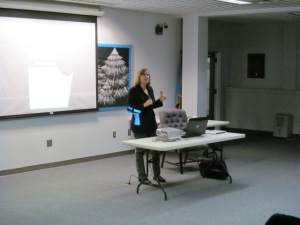
Before she began her horror writing career in 2010, she was selling articles to newspapers and magazine such as The Island Crier and The Works. She was also a humor columnist for the Block Island Times. She has also just been hired to review B horror movies for the Cinema Knife Fight website.
The habits of a successful writer include writing a lot, Longo said. A writer should be setting realistic deadlines and goals. If these deadlines and goals are not realistic, you will just be defeating yourself and setting yourself up to fail. Stephen King writes 10 pages a day. Ernest Hemingway wrote 500 words a day.
“Thomas Harris took 10 years to write the sequel to Silence of the Lambs. Robert James Waller wrote The Bridges of Madison County in 6 weeks. Both were NY Times bestsellers.”
One shouldn’t use Harris as an excuse not to write every day or at least a few days a week, she said.
A writer should even read more than they are writing. Reading is always good, but it should be well-written book,s not poorly-written books such as the Twilight series by Stephenie Meyer, she said. There are two books every writer should read. They are The Elements of Style by William Strunk Jr. and E. B. White and On Writing by King. A writer needs to know the rules of writing before choosing to break those rules.
If you want to write, you should seek out workshops, conventions, and writers’ groups so as to meet other writers. Longo states that writing is a lonely profession and meeting fellow writers is always a good thing. Other writers can help you or you may be able help them with editing, a potential market, or even with a story problem. “The best way to learn about the craft of writing is to talk to others who have been successful at it.”
Longo met Ken Wood, publisher of Shock Totem, in 2009 at the Northeastern Writer’s Conference (NECON). In 2011, he asked her to write-up an anecdote she had told him about her father so it could be printed in the magazine’s holiday issue.
When it comes to editing, it’s very important to Longo. Everyone needs to learn the basics of sentence structure, grammar, punctuation, and verb tenses. If you can do these things in your story, you won’t do it in a query letter, which will lead to no agents or publishers reading your story. This is where your fellow writers or your writer’s group comes in handy. Let them read your first draft and listen to their suggestions. Your first draft isn’t going to be publishable.
“No book on the shelves today is still in the original draft form that the writer first wrote. Everything needs editing,” Longo said.
Another important fact for a writer to learn is the need to be prepared for rejection because the publishing world is all subjective, Longo said. One publisher may reject a story while the another one will accept it.
For more information about Stacey Longo, click here.